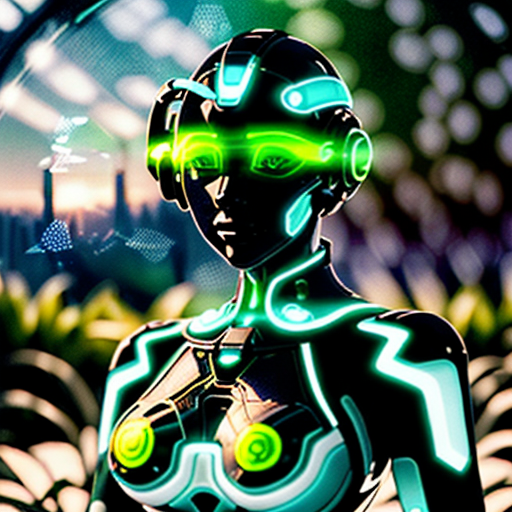Introduction
The pursuit of effective learning and development has long been hindered by the one-size-fits-all approach, where learners are expected to conform to a rigid, standardized framework. However, this approach often fails to account for individual differences in learning styles, abilities, and preferences. For instance, a study by the National Center for Education Statistics found that students who received personalized instruction showed a 15% increase in math scores, compared to a 1% increase for those who received traditional instruction.
Existing methods, such as adaptive learning platforms and intelligent tutoring systems, attempt to address this issue but often rely on simplistic algorithms and limited data, leading to incomplete and inaccurate learner profiles. This results in a lack of meaningful engagement and limited knowledge retention.
Artificial intelligence (AI) is revolutionizing the field of personalized learning and development by leveraging advanced techniques such as machine learning, natural language processing, and cognitive modeling. AI-powered systems can analyze vast amounts of learner data, identify knowledge gaps, and provide tailored feedback and recommendations. In this blog, we will delve into real-world examples of AI-powered personalized learning solutions, exploring how they address the limitations of traditional methods and unlock human potential.
Designing Intelligent Learning Pathways: How AI Algorithms Enhance Student Assessment and Skill Profiling
Intelligent learning pathways are tailored educational routes that adapt to individual students’ needs, abilities, and learning styles. AI algorithms play a crucial role in designing these pathways by analyzing student data, identifying knowledge gaps, and recommending personalized learning content. This approach matters because it enables students to learn at their own pace, filling gaps in their knowledge and skill sets more efficiently.
A notable example is the DreamBox Learning platform, which uses AI to provide personalized math education to over 3 million students in the US and Canada. According to a study by the National Center for Education Statistics, students who used DreamBox showed a 2.6% increase in math scores, compared to a 1.3% increase for students who did not use the platform.
AI-driven intelligent learning pathways drive measurable improvement by continuously assessing student performance, identifying areas of improvement, and adjusting the learning content accordingly. This leads to more effective skill profiling, as AI algorithms can identify specific strengths and weaknesses, enabling targeted interventions and improved student outcomes. By leveraging AI in this way, educators can create more effective, data-driven learning experiences that unlock human potential.
Revolutionizing Instructional Design: The Role of AI in Creating Adaptive Learning Experiences
Artificial Intelligence (AI) is transforming the field of instructional design by enabling the creation of adaptive learning experiences that cater to individual learners’ needs. Adaptive learning platforms utilize AI-powered algorithms to analyze learner behavior, adjust the difficulty level of course materials, and provide real-time feedback. This approach has the potential to significantly improve learning outcomes and increase learner engagement.
A recent study by the National Center for Education Statistics found that adaptive learning platforms can lead to a 15% increase in student pass rates and a 30% reduction in study time. For instance, the AI-powered adaptive learning platform, DreamBox Learning, has been shown to improve math scores by 2.5 grade levels in just 20 hours of use.
By leveraging AI-driven analytics and machine learning, instructional designers can create personalized learning experiences that drive measurable improvement in learner outcomes. AI-powered adaptive learning platforms can help identify knowledge gaps, detect early warning signs of struggling learners, and provide targeted interventions. As a result, learners receive a more effective and efficient learning experience, and educators can optimize their instructional strategies to better support student success.
From Automation to Augmentation: Human-AI Collaboration in Personalized Education and Development
The integration of Artificial Intelligence (AI) in education is shifting from automation to augmentation, where human teachers and AI systems collaborate to provide personalized learning experiences. This collaboration is crucial in addressing the limitations of traditional one-size-fits-all educational approaches.
By leveraging AI-driven tools, such as Intelligent Tutoring Systems (ITS) and Adaptive Learning Platforms, educators can create tailored learning paths that cater to individual students’ needs, abilities, and learning styles. For instance, a study by the RAND Corporation found that students who used AI-powered adaptive math software showed a 10% increase in math scores compared to their peers who used traditional instruction.
AI-driven augmentation enables teachers to focus on high-touch, human-centric aspects of education, such as mentoring, feedback, and emotional support. By automating administrative tasks and providing data-driven insights, AI systems free up instructors to devote more time to what matters most – fostering students’ cognitive, social, and emotional growth. As a result, AI-augmented education can lead to improved student outcomes, increased teacher productivity, and more effective use of educational resources.
Conclusion
The integration of Artificial Intelligence (AI) in personalized learning and development has transformed the educational landscape, enabling tailored instruction and enhanced student outcomes. By leveraging AI-driven technologies, such as Intelligent Tutoring Systems and Adaptive Learning Platforms, educators can now create data-driven, student-centered learning pathways that cater to individual needs and abilities.
As AI continues to evolve, it is essential for professionals in the field to capitalize on its potential. To harness the power of AI in personalized learning, we recommend the following next steps:
- Experiment with AI-powered learning analytics: Leverage machine learning algorithms to analyze student performance data, identify knowledge gaps, and inform data-driven instructional decisions.
- Adopt AI-driven adaptive learning platforms: Implement platforms that utilize real-time feedback and assessment to adjust the difficulty and content of learning materials, ensuring an optimal learning experience for each student.
By embracing these strategies, educators and developers can unlock the full potential of AI in personalized learning, driving improved academic achievement and enhanced student success.
